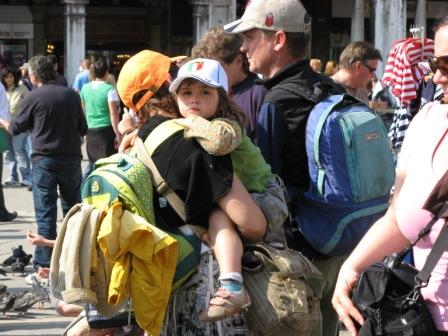I don’t follow bicycle racing that much (polite way of saying “at all”) but I do know that there is a hugely important annual Italian event which corresponds roughly to the Tour de France: The Giro d’Italia. It has to start somewhere, and this year, its centennial, it will start on the Lido of Venice.
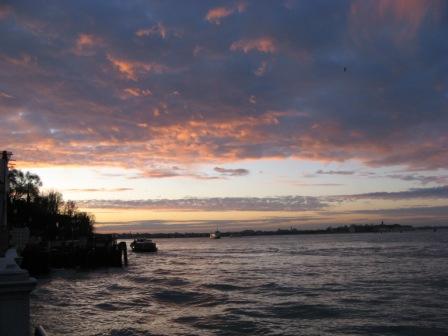
(The view from Venice: The long dark strip on the horizon is the Lido.)
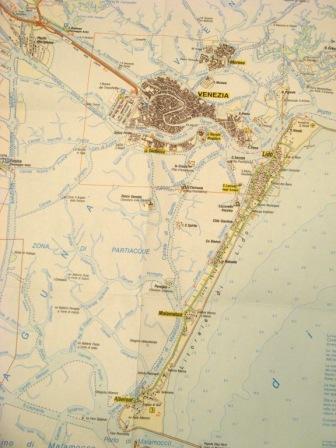
So how is this supposed to work? The racers will be divided into squads, and they will do a team time trial by the chronometer. Then they’ll eat and drink and get their vitamin injections and take the ferry and leave the Lido and pick up the race the next day on the mainland, where the terrain has some verticality and they can really get their teeth into each other.
(The Lido is the long narrow island on the right. Detail from the EuroCart map LAGUNA VENETA, Studio F.M.B. Bologna.)
The city has been working dangerously hard to get the island spruced up and ready for the onslaught. The positive side: Banks of flowers have been installed (usually when plants are put out to beautify a public event, such as the film festival, people begin to liberate them. We’ll see how long these last). Even better, every bump, pothole, crack, fissure, bubble, or other anomaly in the road pavement for the 20.8 km (12.7 miles) course has been filled, smoothed, buffed. The residents are thrilled about that.
The downside: The Lido is being taken hostage by this event. 
Anyone who needs to go somewhere on the Lido (Lino and me, say, if we were to want to go rowing that afternoon) tomorrow will have the option of once-hourly boat service which will make several stops along the lagoon shoreline. At which point you debark and walk inland — presuming they let you cross the road.
Well, it won’t kill me not to go to the Lido one day. Au contraire. But it’s the drama of the logistics that has overwhelmed the world- and life-view of the Lido People. Whereas citizens of other towns experiencing world-class events (Monaco comes to mind) might feel a kind of excitement and even pride, people on the Lido are thinking only of how hard life is going to be tomorrow. They are among the most provincial, isolated people I’ve ever known, and about the only thing that has any reality for them is their own little island life. (I exclude shopkeepers, who I imagine are hoping for some kind of windfall from the tornado passing through.)
I would love to have the chance to announce that Jesus is coming back tomorrow and He’s starting on the Lido, just to hear what the Lido People would say. It would either be “Will Billa [the supermarket] still stay open till 8:00?” or “So, does that mean that the vaporetto will follow the Sunday timetable?”
I’ll let you know how it goes.

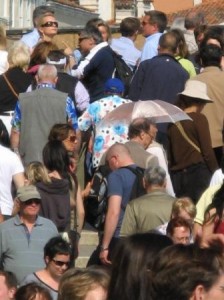
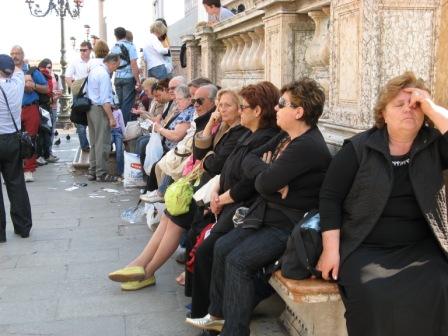 It would be an impressive spiritual exercise for anyone wanting to determine how much compassion they can feel toward their fellow humans to board the #1 local vaporetto line at Piazzale Roma on any Mayday (which amounts to virtually any day from May 1 to September 1) with their soul full of love for humankind, and then measure what’s left by the time they reach San Marco.
It would be an impressive spiritual exercise for anyone wanting to determine how much compassion they can feel toward their fellow humans to board the #1 local vaporetto line at Piazzale Roma on any Mayday (which amounts to virtually any day from May 1 to September 1) with their soul full of love for humankind, and then measure what’s left by the time they reach San Marco. 